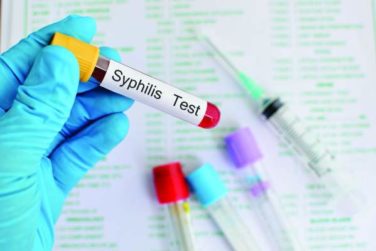AT ATS 2016
SAN FRANCISCO (FRONTLINE MEDICAL NEWS) – Despite evidence implicating platelets in the development and resolution of acute respiratory distress syndrome (ARDS), the antiplatelet agent aspirin was not efficacious for prevention, according to the findings from a phase IIb trial reported at an international conference of the American Thoracic Society.
A total of 400 at-risk patients from emergency departments were enrolled in the trial, known as LIPS-A (Lung Injury Prevention Study With Aspirin), and randomized evenly to aspirin or placebo, started within 24 hours of presentation.
Overall, about 10% of patients developed ARDS by day 7, with no significant difference between the groups, according to results reported at the conference and simultaneously published in JAMA ( 2016 May 15. doi: 10.1001/jama.2016.6330 ).
“In patients at risk for ARDS, aspirin therapy administered within 24 hours of presentation to the emergency department was safe. However, it did not decrease the primary outcome of ARDS development or improve any of the secondary outcomes,” commented lead author Dr. Daryl J. Kor , an associate professor of anesthesiology at the Mayo Clinic, Rochester, Minn. “The results of this phase IIb trial do not support continuation to a larger phase III trial.”
Nonetheless, as the first large multicenter ARDS prevention trial, LIPS-A provided an abundance of information about research in this challenging area, he stressed. For example, the information gleaned will help inform future trials on issues related to timely enrollment, risk prediction, and work flow modifications.
“In terms of limitations, we should note that there was a very low rate of ARDS, much lower than we anticipated,” Dr. Kor said. Patients also had less severe disease than expected. “There are always questions about the dose and duration [of treatment], as well as whether or not the ED environment is early enough for an ARDS prevention trial. Almost 15% of our patient population had prevalent bilateral infiltrates by the time they presented to the emergency department,” he noted.
Despite the negative LIPS-A findings, there may still be a role for aspirin in the treatment of ARDS, according to conference attendee Dr. Ivor S. Douglas , chief of pulmonary sciences and critical care medicine, and director of the medical intensive care unit, at the Denver Health Medical Center and the University of Colorado.
ARDS lacks a good biomarker similar to the troponin used to identify and guide aspirin treatment in myocardial infarction, he explained in an interview.
“I continue to believe that there are several endophenotypes, subgroups of the disease where an endothelial vascular phenotype is predominant,” Dr. Douglas explained. “And as we understand more about the fundamental biology of the disease, I suspect that many of these things that have been shown in unselected populations not to have efficacy – you didn’t hear me say negative, but not to have efficacy – may well be revisited within the context of a more well defined phenotype for the disease.
“I think it’s imperative that we don’t just call the balls and strikes here,” Dr. Douglas added. “The idea is to move the science forward and to do it in a really thoughtful and rigorous way.”
LIPS-A enrolled adult patients from 16 U.S. academic hospitals who were at risk for ARDS, defined as having a Lung Injury Prediction Score of 4 or greater (corresponding to a risk of about 18%), in the emergency department and were planned to be hospitalized.
They were randomized to receive aspirin (a 325-mg loading dose, followed by 81 mg/day) or placebo within 24 hours of emergency department presentation, with continuation out to hospital day 7, discharge, or death.
On average, patients received their first dose of the study drug slightly less than 13 hours after randomization, Dr. Kor reported.
Incident ARDS by day 7 was seen in 10.3% of the aspirin group and 8.7% of the placebo group, a nonsignificant difference. Findings were similar for each study site individually.
The groups were also statistically indistinguishable with respect to mean number of ventilator-free days out to day 28 (24.9 vs. 25.2), mean intensive care unit length of stay (5.2 vs. 5.4 days), and the 28-day rate of survival (90% vs. 90%), among other secondary outcomes.
In terms of safety, the incidence of bleeding-related adverse events was not significantly greater with aspirin than with placebo (5.6% vs. 2.6%). Measures of renal function were also essentially the same.
Analyses of a host of biomarkers associated with injury, inflammation, and thrombosis generally showed no differences in levels between groups. The possible exception was a trend toward a higher level of interleukin-2 in the aspirin group.
Dr. Kor disclosed that he receives personal fees from UpToDate.






